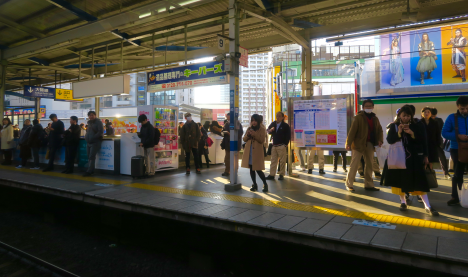In Japan we had the astonishing experience of being able to travel on trains easily, to where we wanted to go. On trains that were clean. On trains that ran absolutely on time. What a concept. A concept that seems totally lost in my home country. But I digress. Back to the trains.
And on to looking out the windows of trains, while standing in the station.

Looking out a train window is a good way to watch people.

It’s not quite a one-way mirror, but there is a certain degree of concealment.

These views come and go quickly if the train is in motion, but thanks to the miracle of digital storage, a hastily taken image may be studied at leisure.

Through the windows, through the next train, to the platform and station beyond….

We have glimpses of other lives through the train window.
Where they go, what they do, why they do what they do, will remain a mystery.
What is there to see in this last photo, with people silhouetted and sun-limned?

Take a moment to imagine.

My first experience with trains in the USA was in 1950. Even as an 8 year old immigrant from war torn Belgium, I was shocked. The trains in Belgium were old, but they were CLEAN and on time. The Long Island Rail Road trains were quite a disappointment, to say the least. I recently took a train from Boston to Raleigh, North Carolina. Door to Door was 29 hours – much slower than before the Civil War.
Before the Civil War, the US enterprises ran on railroads, horses and carts. The railroads, with their bulk scheduling, onerous Federal regulations and union regulations, were allowed to decline. George, you met the decline a few years before I traveled to Providence, RI, beginning in 1957. The trains smelled bad and the frequent stops were maddening. The Interstate was a planned relief for a system, allowed to decline. The Interstate met the far-flung need for efficient transportation and development, which also made a lot of money.